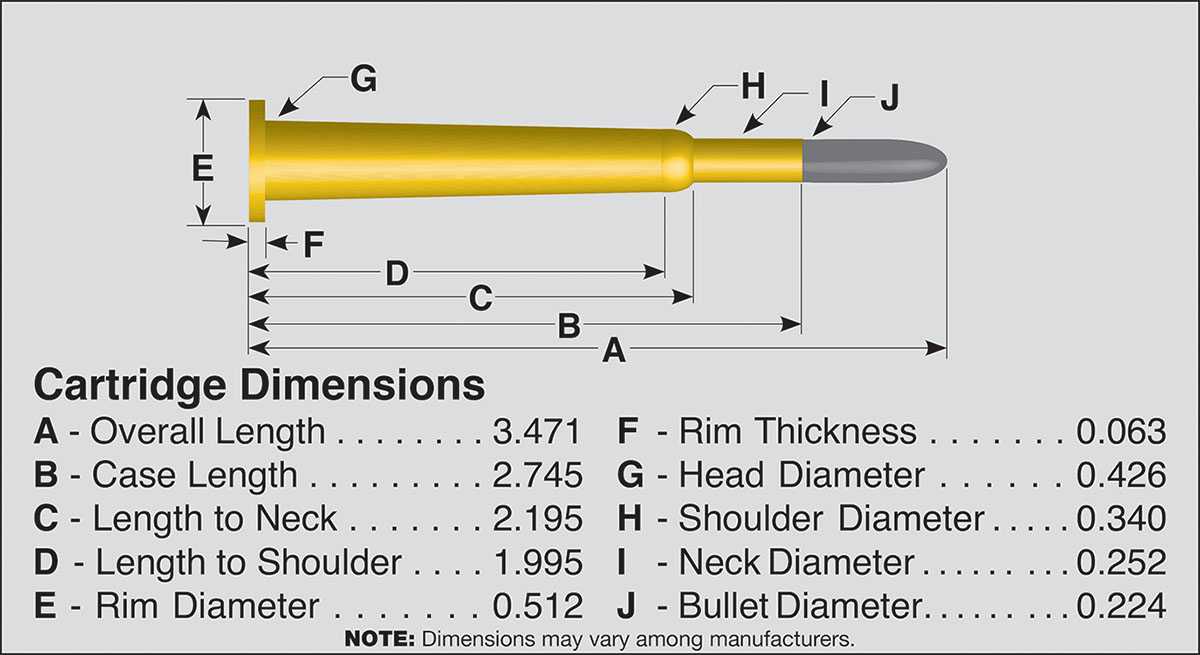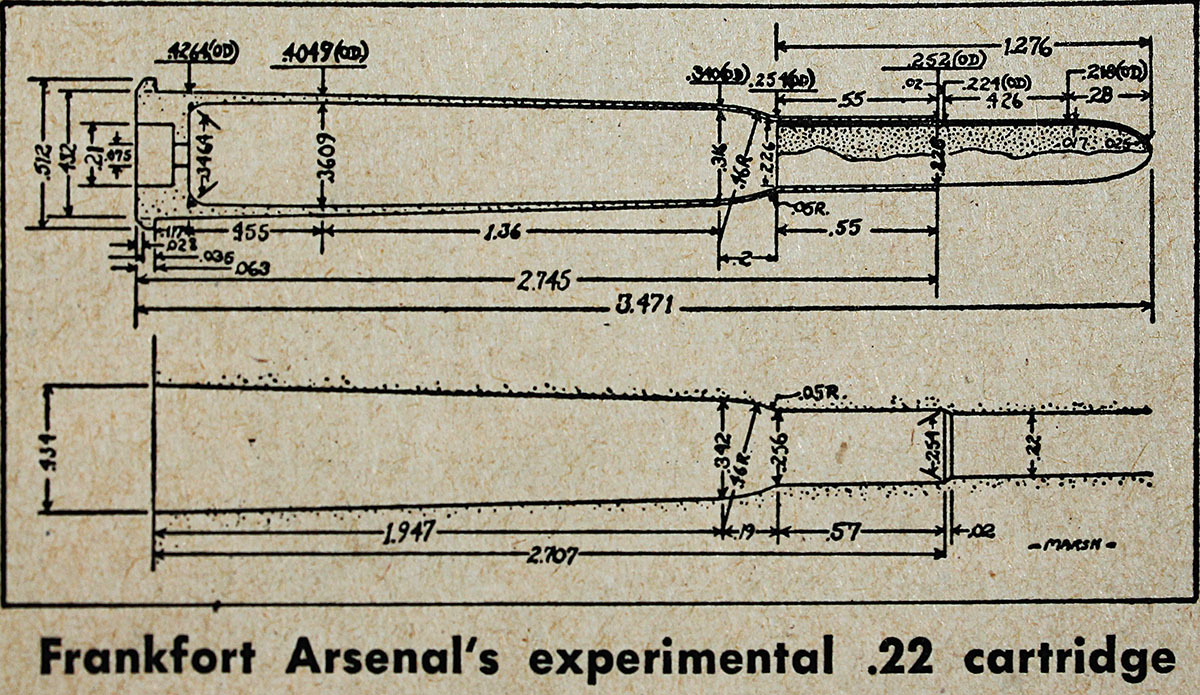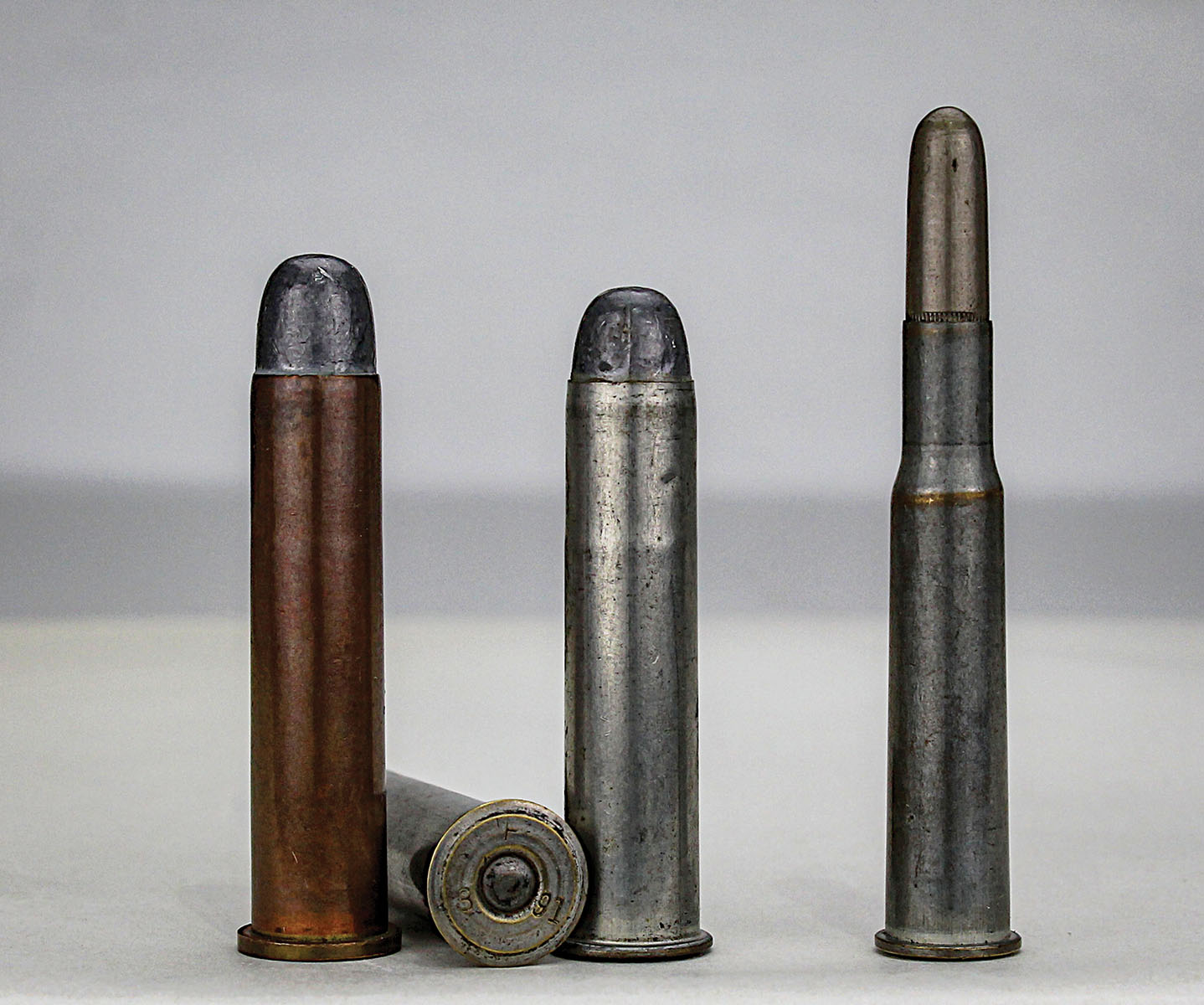Fouling Shots
The U.S. Army's 5.56 Krag of 1896 - Almost
column By: Art Merrill | May, 25

On March 6, 1894, U.S. Army Chief of Ordnance Brigadier General Daniel W. Flagler ordered “a few experimental arms of caliber less than .30-in,” and the Army subsequently chose bullets of 22 and 20 calibers for the experiment. According to the Annual Report of the Chief of Ordnance to the Secretary of War for 1895, “Four barrels of each caliber have been bored and turned and are ready for chambering and rifling,” the barrels’ four grooves ordered to have twists of 1:6 for the 22, and 1:5.5 for the .20 caliber. “Cartridge shells and bullets for the .22-inch caliber have just been furnished, made at Frankford Arsenal on data worked up at this Armory by Lieutenant Dickson, Ordnance Department,” the report reads. “These barrels can now be completed and assembled to the mechanism of the .30-inch caliber rifle [the Krag-Jorgensen rifle] for trial. The results of this caliber will be based on the chamber and cartridge for the .20-inch caliber.”
Frankford Arsenal delivered 250 unprimed cases and 250 cupro-nickel jacketed 118-grain .224-inch bullets, plus 26 bullets of 112 grains and 25 bullets weighing 120 grains for this “0.22 Inch Caliber Cartridge for Experimental Arm.” It appears cases were “tinned” with a copper-zinc alloy (possibly Bloomfield Gilding Metal) first applied to copper cases to prevent them from sticking in chambers and later to brass cases as a corrosion preventative. The rimmed 2.745 inches long cases stretched nearly as long as the 300 H&H Magnum case, with a very pronounced taper. The rounded shoulders put one in mind of the “double radius” appearing on Roy Weatherby’s magnum cartridges a half-century later.
The overall cartridge length measured 3.471 inches. Cases appear to be utterly proprietary – at least, I found no other cartridge in my references with anywhere near the same dimensions. Driven by Peyton or W-A smokeless powders, bullets were intended to reach 2,600 feet per second (fps), significantly faster than the Army’s then-new 30 U.S. Government (30-40 Krag) at 2,200 fps.

However, the experiment apparently went nowhere. The following year’s Annual Report of 1896 includes the statement, “Reference was made in the report of 1893 to the intention of the Department to conduct experiments for determining whether any advantage could be gained in the use of a smaller caliber than .30 for a military arm.” The 1896 report repeats that cartridges, barrels and .22 caliber bullets of three weights had been manufactured, and then the matter ends there. In searching through the Annual Reports for 1897 through 1902, I found no further mention of the experiment.
Perhaps the 19th century U.S. Army decided the .224-inch bullet lacked any advantage over the .30 caliber. One of those advantages today is launching them from comparatively lightweight select-fire infantry rifles and squad automatic weapons, which, of course, didn’t exist in 1895. Maybe the early smokeless powders just weren’t up to the task. Consider that shooting a .224-inch bullet at 600 yards in competition today is routine, it was unheard of back then and likely considered impossible to accomplish with any modicum of accuracy. The .224-inch martial bullet concept was an idea ahead of its time (and note that .224-inch bullets exceeding 100 grains are nonexistent even today).

It’s also possible the 0.22-inch Caliber Cartridge for Experimental Arm succumbed to simple curmudgeonly attitudes. Bullets of .22 and .20 caliber for military rifles, even at 2,600 fps, may have seemed too radical an idea to Army generals who had begun their careers with muzzleloaders throwing comparatively slow lead projectiles of .45, .50 and larger caliber. In 1895, the Army was phasing out the .45 caliber bullet (45-70 Government) in favor of the .30 caliber, and the Navy had adopted an even smaller 6mm bullet (in the 236 USN cartridge) for its Winchester Model 1895 Lee-Navy rifle. But the Army drew the line at the .30 caliber, apparently dropping experiments with the Frankford Arsenal .22-caliber cartridge and never pursuing the .20 caliber cartridge.
To simplify logistics, the Navy gave up its 236 USN and adopted the .30-caliber Krag rifle along with the Army. Thus, .30 calibers ruled in America’s military for almost 70 years, from the 30-40 Krag to the 30 M1906 (30-06) to the 7.62x51 NATO, until the U.S. Air Force revisited the .22 caliber as the 5.56x45 and the Army officially adopted the cartridge in 1964. It took other NATO nations another 16 years to reluctantly accept the “0.22-inch caliber” bullet for battle rifles.
Known among cartridge collectors as the “22 Krag,” “22 F.A. Experimental” or “22 1895 Experimental,” few can boast of owning an example. Because there is no further report of the experiment, it is possible the Army never experimented with the cartridge after ordering test barrels and cartridges. How some cartridges escaped the Army and fell into the hands of collectors, who can say?
More intriguing is the idea that somewhere, maybe in a dusty box in a back corner of an Army arsenal or leaning in a barn or an attic or a closet, there is a Krag-Jorgensen rifle that, when viewed from the muzzle, appears oddly to be barreled in .22 caliber – a bit of forgotten American history.


